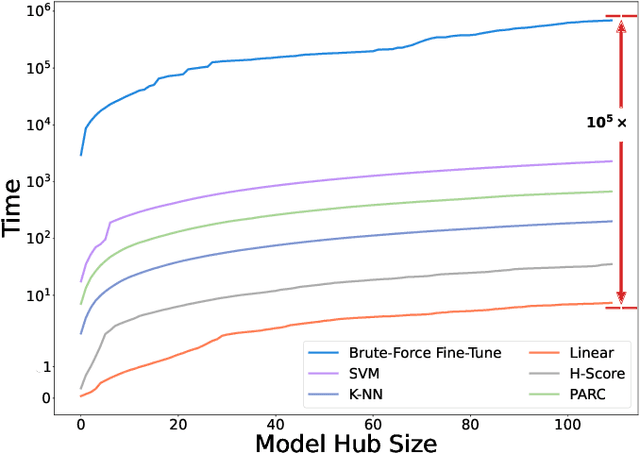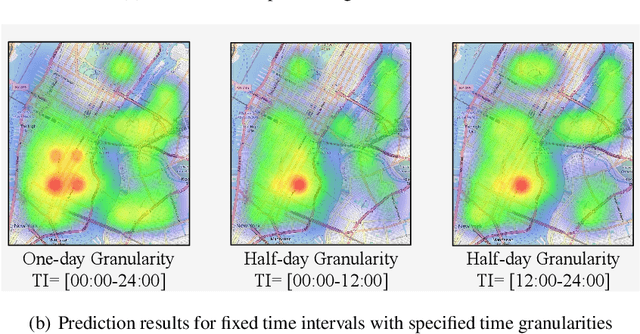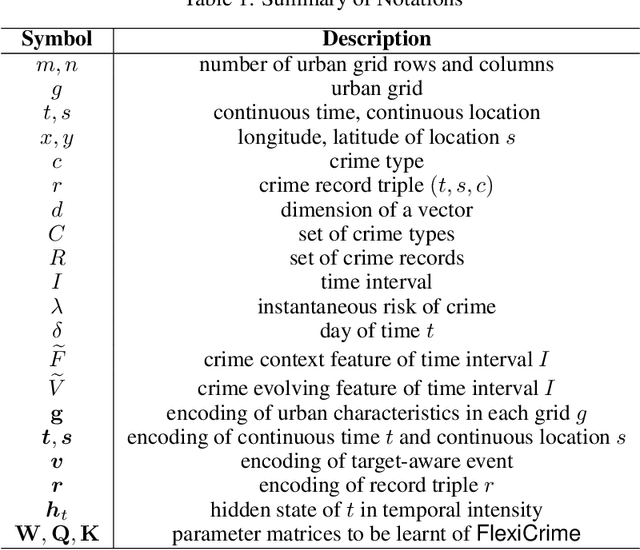Guandong Xu
University of Technology Sydney
A Comprehensive Survey of Knowledge-Based Vision Question Answering Systems: The Lifecycle of Knowledge in Visual Reasoning Task
Apr 24, 2025Abstract:Knowledge-based Vision Question Answering (KB-VQA) extends general Vision Question Answering (VQA) by not only requiring the understanding of visual and textual inputs but also extensive range of knowledge, enabling significant advancements across various real-world applications. KB-VQA introduces unique challenges, including the alignment of heterogeneous information from diverse modalities and sources, the retrieval of relevant knowledge from noisy or large-scale repositories, and the execution of complex reasoning to infer answers from the combined context. With the advancement of Large Language Models (LLMs), KB-VQA systems have also undergone a notable transformation, where LLMs serve as powerful knowledge repositories, retrieval-augmented generators and strong reasoners. Despite substantial progress, no comprehensive survey currently exists that systematically organizes and reviews the existing KB-VQA methods. This survey aims to fill this gap by establishing a structured taxonomy of KB-VQA approaches, and categorizing the systems into main stages: knowledge representation, knowledge retrieval, and knowledge reasoning. By exploring various knowledge integration techniques and identifying persistent challenges, this work also outlines promising future research directions, providing a foundation for advancing KB-VQA models and their applications.
UniRVQA: A Unified Framework for Retrieval-Augmented Vision Question Answering via Self-Reflective Joint Training
Apr 05, 2025Abstract:Knowledge-based Vision Question Answering (KB-VQA) systems address complex visual-grounded questions requiring external knowledge, such as web-sourced encyclopedia articles. Existing methods often use sequential and separate frameworks for the retriever and the generator with limited parametric knowledge sharing. However, since both retrieval and generation tasks require accurate understanding of contextual and external information, such separation can potentially lead to suboptimal system performance. Another key challenge is the integration of multimodal information. General-purpose multimodal pre-trained models, while adept at multimodal representation learning, struggle with fine-grained retrieval required for knowledge-intensive visual questions. Recent specialized pre-trained models mitigate the issue, but are computationally expensive. To bridge the gap, we propose a Unified Retrieval-Augmented VQA framework (UniRVQA). UniRVQA adapts general multimodal pre-trained models for fine-grained knowledge-intensive tasks within a unified framework, enabling cross-task parametric knowledge sharing and the extension of existing multimodal representation learning capability. We further introduce a reflective-answering mechanism that allows the model to explicitly evaluate and refine its knowledge boundary. Additionally, we integrate late interaction into the retrieval-augmented generation joint training process to enhance fine-grained understanding of queries and documents. Our approach achieves competitive performance against state-of-the-art models, delivering a significant 4.7% improvement in answering accuracy, and brings an average 7.5% boost in base MLLMs' VQA performance.
Is LLMs Hallucination Usable? LLM-based Negative Reasoning for Fake News Detection
Mar 12, 2025Abstract:The questionable responses caused by knowledge hallucination may lead to LLMs' unstable ability in decision-making. However, it has never been investigated whether the LLMs' hallucination is possibly usable to generate negative reasoning for facilitating the detection of fake news. This study proposes a novel supervised self-reinforced reasoning rectification approach - SR$^3$ that yields both common reasonable reasoning and wrong understandings (negative reasoning) for news via LLMs reflection for semantic consistency learning. Upon that, we construct a negative reasoning-based news learning model called - \emph{NRFE}, which leverages positive or negative news-reasoning pairs for learning the semantic consistency between them. To avoid the impact of label-implicated reasoning, we deploy a student model - \emph{NRFE-D} that only takes news content as input to inspect the performance of our method by distilling the knowledge from \emph{NRFE}. The experimental results verified on three popular fake news datasets demonstrate the superiority of our method compared with three kinds of baselines including prompting on LLMs, fine-tuning on pre-trained SLMs, and other representative fake news detection methods.
HyperG: Hypergraph-Enhanced LLMs for Structured Knowledge
Feb 25, 2025Abstract:Given that substantial amounts of domain-specific knowledge are stored in structured formats, such as web data organized through HTML, Large Language Models (LLMs) are expected to fully comprehend this structured information to broaden their applications in various real-world downstream tasks. Current approaches for applying LLMs to structured data fall into two main categories: serialization-based and operation-based methods. Both approaches, whether relying on serialization or using SQL-like operations as an intermediary, encounter difficulties in fully capturing structural relationships and effectively handling sparse data. To address these unique characteristics of structured data, we propose HyperG, a hypergraph-based generation framework aimed at enhancing LLMs' ability to process structured knowledge. Specifically, HyperG first augment sparse data with contextual information, leveraging the generative power of LLMs, and incorporate a prompt-attentive hypergraph learning (PHL) network to encode both the augmented information and the intricate structural relationships within the data. To validate the effectiveness and generalization of HyperG, we conduct extensive experiments across two different downstream tasks requiring structured knowledge.
STAR: Stepwise Task Augmentation and Relation Learning for Aspect Sentiment Quad Prediction
Jan 27, 2025



Abstract:Aspect-based sentiment analysis (ABSA) aims to identify four sentiment elements, including aspect term, aspect category, opinion term, and sentiment polarity. These elements construct the complete picture of sentiments. The most challenging task, aspect sentiment quad prediction (ASQP), predicts these elements simultaneously, hindered by difficulties in accurately coupling different sentiment elements. A key challenge is insufficient annotated data that limits the capability of models in semantic understanding and reasoning about quad prediction. To address this, we propose stepwise task augmentation and relation learning (STAR), a strategy inspired by human reasoning. STAR constructs auxiliary data to learn quadruple relationships incrementally by augmenting with pairwise and overall relation tasks derived from training data. By encouraging the model to infer causal relationships among sentiment elements without requiring additional annotations, STAR effectively enhances quad prediction. Extensive experiments demonstrate the proposed STAR exhibits superior performance on four benchmark datasets.
How to Select Pre-Trained Code Models for Reuse? A Learning Perspective
Jan 07, 2025



Abstract:Pre-training a language model and then fine-tuning it has shown to be an efficient and effective technique for a wide range of code intelligence tasks, such as code generation, code summarization, and vulnerability detection. However, pretraining language models on a large-scale code corpus is computationally expensive. Fortunately, many off-the-shelf Pre-trained Code Models (PCMs), such as CodeBERT, CodeT5, CodeGen, and Code Llama, have been released publicly. These models acquire general code understanding and generation capability during pretraining, which enhances their performance on downstream code intelligence tasks. With an increasing number of these public pre-trained models, selecting the most suitable one to reuse for a specific task is essential. In this paper, we systematically investigate the reusability of PCMs. We first explore three intuitive model selection methods that select by size, training data, or brute-force fine-tuning. Experimental results show that these straightforward techniques either perform poorly or suffer high costs. Motivated by these findings, we explore learning-based model selection strategies that utilize pre-trained models without altering their parameters. Specifically, we train proxy models to gauge the performance of pre-trained models, and measure the distribution deviation between a model's latent features and the task's labels, using their closeness as an indicator of model transferability. We conduct experiments on 100 widely-used opensource PCMs for code intelligence tasks, with sizes ranging from 42.5 million to 3 billion parameters. The results demonstrate that learning-based selection methods reduce selection time to 100 seconds, compared to 2,700 hours with brute-force fine-tuning, with less than 6% performance degradation across related tasks.
Multi-Task Learning with LLMs for Implicit Sentiment Analysis: Data-level and Task-level Automatic Weight Learning
Dec 12, 2024



Abstract:Implicit sentiment analysis (ISA) presents significant challenges due to the absence of salient cue words. Previous methods have struggled with insufficient data and limited reasoning capabilities to infer underlying opinions. Integrating multi-task learning (MTL) with large language models (LLMs) offers the potential to enable models of varying sizes to reliably perceive and recognize genuine opinions in ISA. However, existing MTL approaches are constrained by two sources of uncertainty: data-level uncertainty, arising from hallucination problems in LLM-generated contextual information, and task-level uncertainty, stemming from the varying capacities of models to process contextual information. To handle these uncertainties, we introduce MT-ISA, a novel MTL framework that enhances ISA by leveraging the generation and reasoning capabilities of LLMs through automatic MTL. Specifically, MT-ISA constructs auxiliary tasks using generative LLMs to supplement sentiment elements and incorporates automatic MTL to fully exploit auxiliary data. We introduce data-level and task-level automatic weight learning (AWL), which dynamically identifies relationships and prioritizes more reliable data and critical tasks, enabling models of varying sizes to adaptively learn fine-grained weights based on their reasoning capabilities. We investigate three strategies for data-level AWL, while also introducing homoscedastic uncertainty for task-level AWL. Extensive experiments reveal that models of varying sizes achieve an optimal balance between primary prediction and auxiliary tasks in MT-ISA. This underscores the effectiveness and adaptability of our approach.
An Event-centric Framework for Predicting Crime Hotspots with Flexible Time Intervals
Nov 02, 2024



Abstract:Predicting crime hotspots in a city is a complex and critical task with significant societal implications. Numerous spatiotemporal correlations and irregularities pose substantial challenges to this endeavor. Existing methods commonly employ fixed-time granularities and sequence prediction models. However, determining appropriate time granularities is difficult, leading to inaccurate predictions for specific time windows. For example, users might ask: What are the crime hotspots during 12:00-20:00? To address this issue, we introduce FlexiCrime, a novel event-centric framework for predicting crime hotspots with flexible time intervals. FlexiCrime incorporates a continuous-time attention network to capture correlations between crime events, which learns crime context features, representing general crime patterns across time points and locations. Furthermore, we introduce a type-aware spatiotemporal point process that learns crime-evolving features, measuring the risk of specific crime types at a given time and location by considering the frequency of past crime events. The crime context and evolving features together allow us to predict whether an urban area is a crime hotspot given a future time interval. To evaluate FlexiCrime's effectiveness, we conducted experiments using real-world datasets from two cities, covering twelve crime types. The results show that our model outperforms baseline techniques in predicting crime hotspots over flexible time intervals.
Personality Analysis from Online Short Video Platforms with Multi-domain Adaptation
Oct 26, 2024Abstract:Personality analysis from online short videos has gained prominence due to its applications in personalized recommendation systems, sentiment analysis, and human-computer interaction. Traditional assessment methods, such as questionnaires based on the Big Five Personality Framework, are limited by self-report biases and are impractical for large-scale or real-time analysis. Leveraging the rich, multi-modal data present in short videos offers a promising alternative for more accurate personality inference. However, integrating these diverse and asynchronous modalities poses significant challenges, particularly in aligning time-varying data and ensuring models generalize well to new domains with limited labeled data. In this paper, we propose a novel multi-modal personality analysis framework that addresses these challenges by synchronizing and integrating features from multiple modalities and enhancing model generalization through domain adaptation. We introduce a timestamp-based modality alignment mechanism that synchronizes data based on spoken word timestamps, ensuring accurate correspondence across modalities and facilitating effective feature integration. To capture temporal dependencies and inter-modal interactions, we employ Bidirectional Long Short-Term Memory networks and self-attention mechanisms, allowing the model to focus on the most informative features for personality prediction. Furthermore, we develop a gradient-based domain adaptation method that transfers knowledge from multiple source domains to improve performance in target domains with scarce labeled data. Extensive experiments on real-world datasets demonstrate that our framework significantly outperforms existing methods in personality prediction tasks, highlighting its effectiveness in capturing complex behavioral cues and robustness in adapting to new domains.
LATEX-GCL: Large Language Models (LLMs)-Based Data Augmentation for Text-Attributed Graph Contrastive Learning
Sep 02, 2024



Abstract:Graph Contrastive Learning (GCL) is a potent paradigm for self-supervised graph learning that has attracted attention across various application scenarios. However, GCL for learning on Text-Attributed Graphs (TAGs) has yet to be explored. Because conventional augmentation techniques like feature embedding masking cannot directly process textual attributes on TAGs. A naive strategy for applying GCL to TAGs is to encode the textual attributes into feature embeddings via a language model and then feed the embeddings into the following GCL module for processing. Such a strategy faces three key challenges: I) failure to avoid information loss, II) semantic loss during the text encoding phase, and III) implicit augmentation constraints that lead to uncontrollable and incomprehensible results. In this paper, we propose a novel GCL framework named LATEX-GCL to utilize Large Language Models (LLMs) to produce textual augmentations and LLMs' powerful natural language processing (NLP) abilities to address the three limitations aforementioned to pave the way for applying GCL to TAG tasks. Extensive experiments on four high-quality TAG datasets illustrate the superiority of the proposed LATEX-GCL method. The source codes and datasets are released to ease the reproducibility, which can be accessed via this link: https://anonymous.4open.science/r/LATEX-GCL-0712.
 Add to Chrome
Add to Chrome Add to Firefox
Add to Firefox Add to Edge
Add to Edge